Mushkin XP2 PC2-5300 DDR2 – Xtreme Performance Memory
by Steve Carmel & Wesley Fink on March 28, 2006 12:01 AM EST- Posted in
- Memory
Mushkin XP2 PC2-5300 DDR2: Overclocking Performance
Using the stock 13X multiplier of the 955 EE Presler, we were able to hit 350 FSB easily at the lowest timings of 3-3-3-10, at a 1:1 ratio, as specified by Mushkin. We could scale as high as 360 FSB when we used the 12X multiplier at 1:1 or an effective DDR-721 rate at the lowest timings.
First is a look at the improvement in bandwidth provided at 350 x 13, using the 1-to-1 memory strap. In averaging the INT and Float, there was an improvement of 2221.5 Mb/s in the buffered SiSoft Sandra bandwidth results, while unbuffered results from default to overclocked at 350 x 13 showed an improvement of 1464 Mb/s. You can also note the improvement (as expected when ramping up the front side bus speeds) of approximately 2718 Mb/s for the 16MB Memory Read scores from PCMark05, and approximately 1713 Mb/s in the 16MB Memory Write scores over that from the default values.
If you are looking for good bandwidth gains, the XP2 PC2-5300 DDR2 modules certainly offer the enthusiast that opportunity. Here are just a few of the 360 x 12 results using a 1:1 memory ratio (which was the highest that we could reach with tight timings).
What happens when you relax the timings and push higher? The Mushkin modules are very flexible; once timings were relaxed, this memory really scaled quite well.
Using a 3:2 memory strap, we reached DDR2-1048, using an FSB of 349 x 13 to obtain DDR2-1048 speeds.
Relaxing the memory timings to 4-4-4-10 allowed us in our testing to reach a front side bus speed of 372, using a 12 multiplier. Here are a couple of Everest results from that escapade. It also allowed buffered SiSoft Sandra Professional 2005 bandwidth result of 8.9 Mb/s and unbuffered bandwidth of ~ 4.52 Mb/s.
Using the stock 13X multiplier of the 955 EE Presler, we were able to hit 350 FSB easily at the lowest timings of 3-3-3-10, at a 1:1 ratio, as specified by Mushkin. We could scale as high as 360 FSB when we used the 12X multiplier at 1:1 or an effective DDR-721 rate at the lowest timings.
First is a look at the improvement in bandwidth provided at 350 x 13, using the 1-to-1 memory strap. In averaging the INT and Float, there was an improvement of 2221.5 Mb/s in the buffered SiSoft Sandra bandwidth results, while unbuffered results from default to overclocked at 350 x 13 showed an improvement of 1464 Mb/s. You can also note the improvement (as expected when ramping up the front side bus speeds) of approximately 2718 Mb/s for the 16MB Memory Read scores from PCMark05, and approximately 1713 Mb/s in the 16MB Memory Write scores over that from the default values.
If you are looking for good bandwidth gains, the XP2 PC2-5300 DDR2 modules certainly offer the enthusiast that opportunity. Here are just a few of the 360 x 12 results using a 1:1 memory ratio (which was the highest that we could reach with tight timings).
What happens when you relax the timings and push higher? The Mushkin modules are very flexible; once timings were relaxed, this memory really scaled quite well.
Using a 3:2 memory strap, we reached DDR2-1048, using an FSB of 349 x 13 to obtain DDR2-1048 speeds.
Relaxing the memory timings to 4-4-4-10 allowed us in our testing to reach a front side bus speed of 372, using a 12 multiplier. Here are a couple of Everest results from that escapade. It also allowed buffered SiSoft Sandra Professional 2005 bandwidth result of 8.9 Mb/s and unbuffered bandwidth of ~ 4.52 Mb/s.


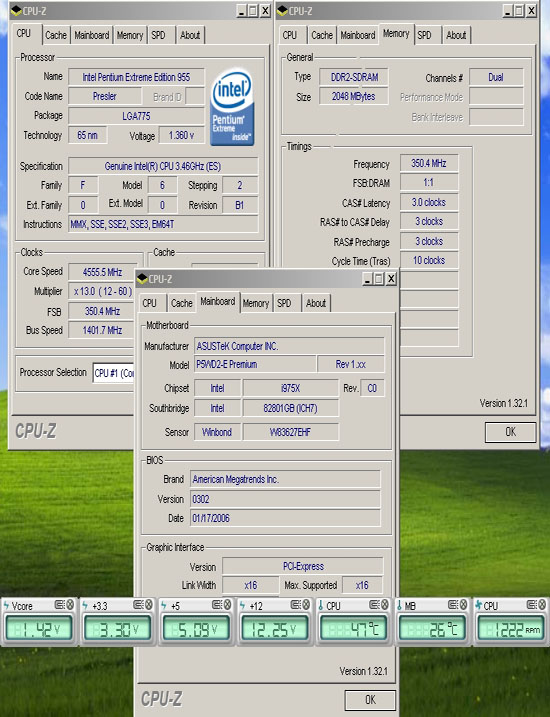

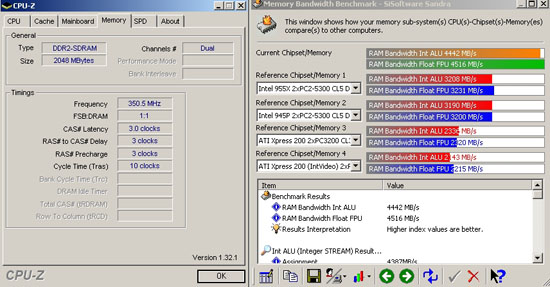
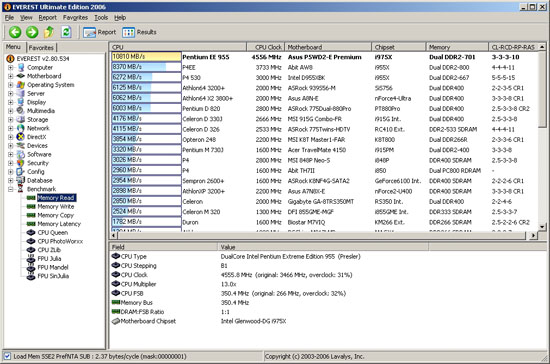
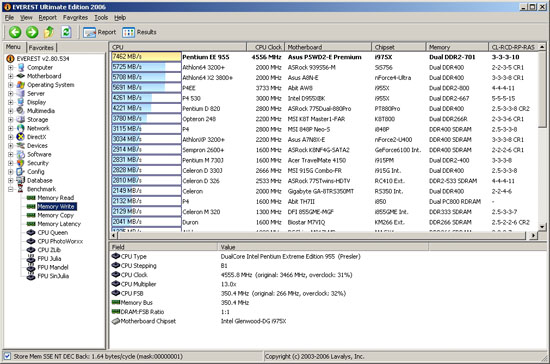
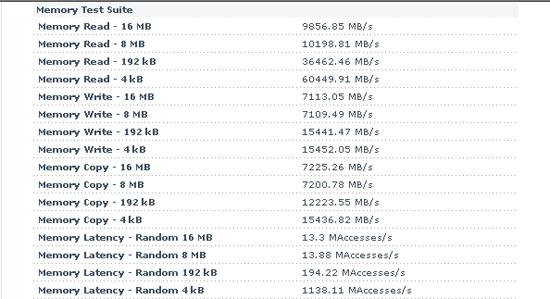
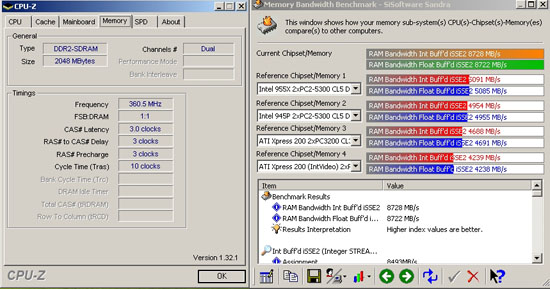
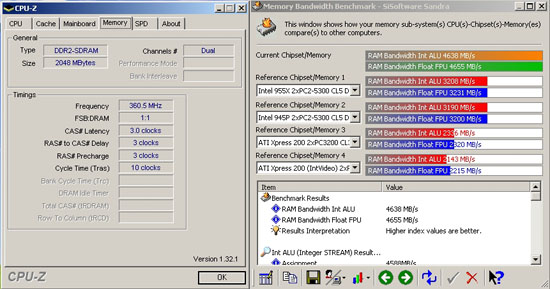
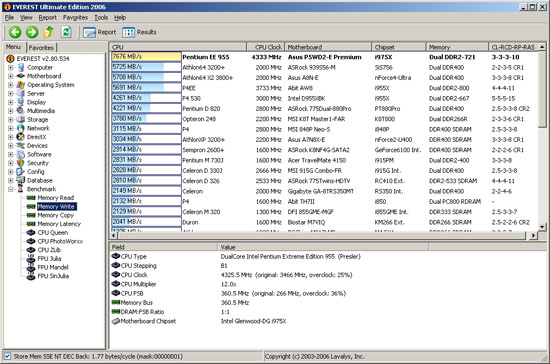
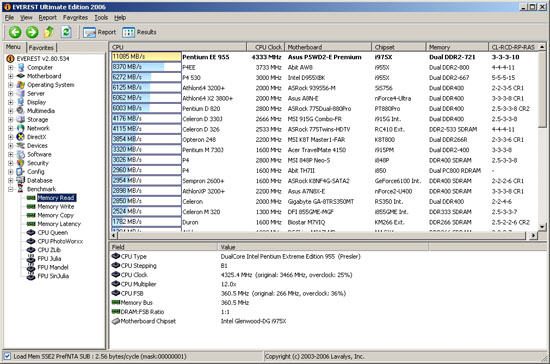

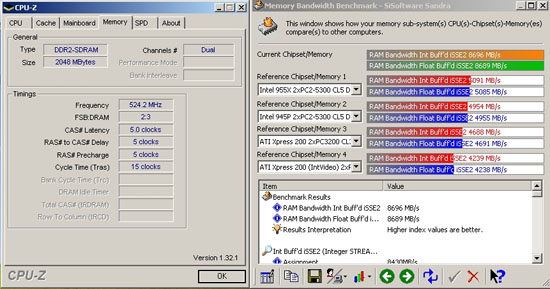
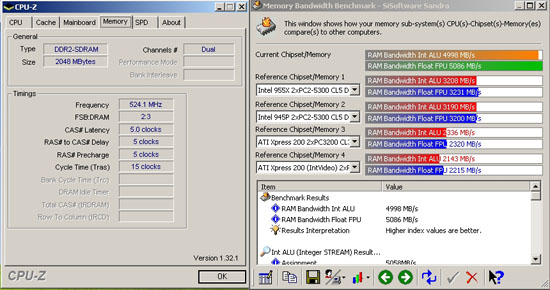
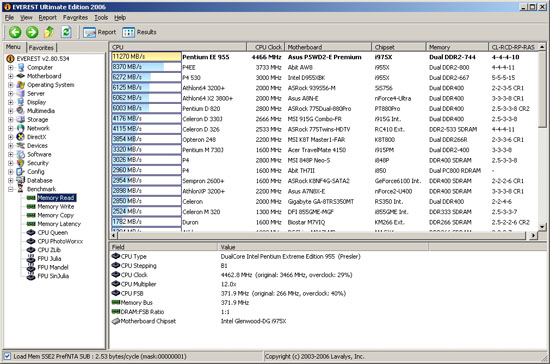
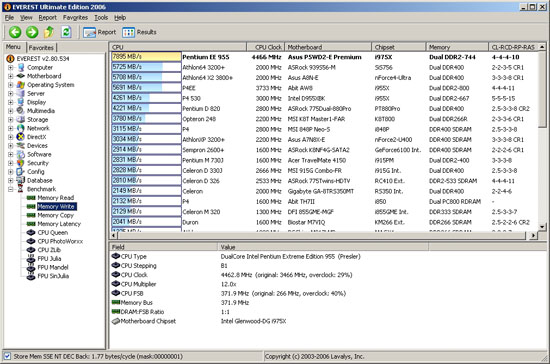








11 Comments
View All Comments
PrinceGaz - Tuesday, March 28, 2006 - link
"I know that the built in spreaders are fantastic for heat dissapation"There is a lot of debate over whether heatspreaders made any difference at all even with the hotter running DDR modules at 2.5V+. Many people believe the heatspreaders are more to do with making them look good rather than perform better. I really don't know either way as all the heatspreaders on my DDR modules seem to do is give a larger flat surface area for the heat to be dissipated from after the heat has been conducted from the individual chips (the heatspreaders even with overvolted modules don't feel particularly warm), and I'm unconvinced if
(a) there is any significant surface area in contact between the chips and heatspreader, let alone whether any thermal compound was used
(b) that might mean you would get better heat dissipation *without* a heatspreader as the cool air would be blowing directly over the memory chips themselves instead of having a heatspreader in the way
Given that DDR modules at normal voltages (up to 3V anyway, I'm not talking about the OCZ modules that could take 3.5V or so -- more than old SDRAM even) without getting very warm, why would cooler running DDR2 need heatspreaders unless pushed up from 1.8V to at least 2.3V. Memory chips don't give off much heat even when over-volted so heat-spreaders seem unnecessary, especially on DDR2 modules. Once you combine that with the fact that at least half the surface area of a memory module without a heatspreader is taken up by the memory chips anyway, there doesn't really seem much point in adding something to "spread" the heat over what is only a slightly larger area.
I will concede that heatspreaders look good though, and the minimal cost of them is returned many times in every premium module they sell with them.